NEW YORK – June 9, 2022 – Stagwell (NASDAQ: STGW) today announced Koalifyed, an end-to-end SaaS influencer marketing management platform within the Stagwell Marketing Cloud, has added TikTok integration, making it one of few influencer marketing management platforms able to support brands and agencies seeking value on one of the fastest-growing platforms for influencer and social commerce.
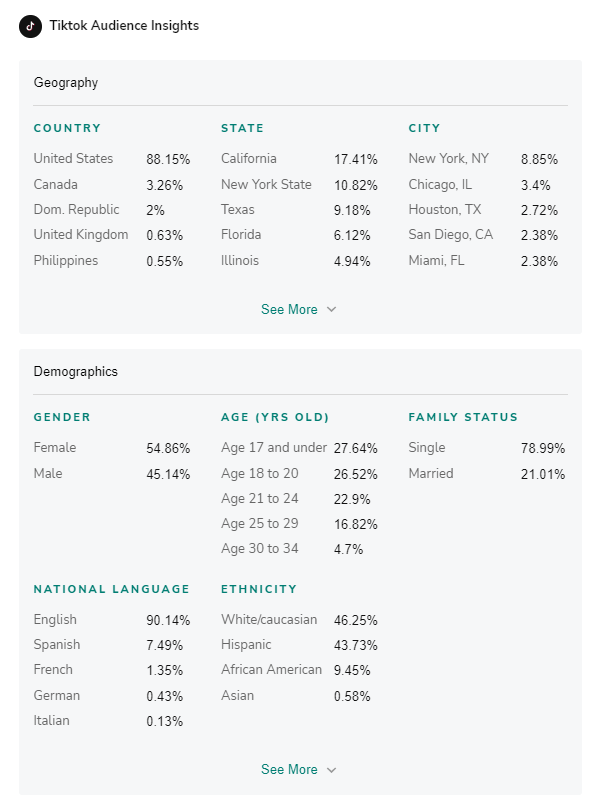
Brands and agencies can discover TikTok creators directly within the Koalifyed platform and view detailed audience insights for each creator they partner with across 11 categories, ranging from location and age group to brands, affinities, likes/interests, and more.
“You can’t talk about the explosive growth opportunity in influencer marketing and social commerce without talking about TikTok – and now, Koalifyed is proud to be a leader in integrating creator insights to help brands and agencies partner with the right influencer, to reach the right consumer segment at the right time,” said Charles Hu, Chief Technology Officer, Koalifyed.
The integration unlocks several features allowing users to strengthen their relationships with influencers and their communities to drive greater efficiency.
- Contact creators and manage the entire campaign seamlessly within the platform.
- Understand an influencer’s audience insights from TikTok to help optimize campaigns, ensure brands are working with the best-suited individual, and increase odds of campaign success.
- Filter audience demographics categories to narrow down creators that meet your criteria.
Koalifyed is a tool within the fast-growing Stagwell Marketing Cloud, a suite of proprietary SaaS and DaaS product solutions designed to support transformation for in-house marketing teams. Koalifyed is currently leveraged by clients such as Gillette, Head & Shoulders, Old Spice, and Pantene to build speed, efficiency, and trust into the most crucial aspects of influencer campaign management, from creator validation to bot sniffing to fraud detection and more.
To learn more about Koalifyed’s TikTok integration, contact hello@koalifyed.com.
About Stagwell Inc.
Stagwell is the challenger network built to transform marketing. We deliver scaled creative performance for the world’s most ambitious brands, connecting culture-moving creativity with leading-edge technology to harmonize the art and science of marketing. Led by entrepreneurs, our 12,000+ specialists in 34+ countries are unified under a single purpose: to drive effectiveness and improve business results for their clients. Join us at www.stagwellglobal.com.
Related
Articles
Events, In the News, Investments & Financials, Press Releases
Jun 09, 2025
Stagwell (STGW) CEO and Chairman Mark Penn to Host Ask Me Anything (AMA) on Reddit to Discuss the Future of Marketing

Events, In the News, Press Releases, Talent & Awards
Jun 05, 2025
Code and Theory Named ANA B2B Agency of the Year After Transforming the World’s Leading Brands

Investments & Financials, Press Releases
May 22, 2025
Stagwell Inc. (STGW) Reports Equity Inducement Grants Under Nasdaq Listing Rule 5635(c)(4)

Newsletter
Sign Up
CONTACT
hello@stagwellglobal.com
SIGN UP FOR OUR INSIGHTS BLASTS
This piece is part of Stagwell’s Marketing Frontiers series on the Creator Economy, Influencer Marketing, and Social Commerce.
From new monetization channels for Creators to content formats to experiment with, Web3 will unlock a new chapter for the Creator Economy. Just as fast as influencer marketing hit its stride, this next era of the internet is forcing the players of the modern Creator Economy to rethink how influence can drive results. Authenticity, deep consumer-to-creator connections, and compelling content will still be the bread and butter of good influencer strategy. But how will Web3’s focus on a decentralized internet impact the ways creators, agencies, and brands interact? How can Creators help brands explore meaningfully in the budding Metaverse – and bring consumers along for the journey? Explore POVs from Stagwell’s marketing leaders on where the Creator Economy is headed in the Metaverse.
A New Class of Creators
John Doyle, Colle McVoy
It’s difficult to imagine how the Metaverse will transform human existence writ large, much less how it will impact creators. To anchor speculation in something solid, it’s helpful to focus on three current aspects of the creator economy that may change the most when we turn on headsets, join in the Metaverse, and drop out of our IRL lives: expression, intimacy, and ownership.

Expression — Today, we may not think of event planners, architects, industrial engineers or sound designers as creators because our current social media access points don’t reward this type of talent. But in the Metaverse, it’s easy to imagine a new class of creators who at once will be able to plan an event, design an environment in which to hold the event (including lights and sound), and sell proprietary virtual products.
Intimacy — Following creators on social can feel like keeping up with a friend. As we interact in immersive, live experiences where creators exist in front of our goggled eyes, an already intimate experience will likely become even more so.
Ownership — The Metaverse will likely rewire the economics of how creators get paid. In a business with so many competing players — including tech platforms, talent agencies, and brands — creators have been subject to unfair business practices. They have formed non-profits to help restore balance in a still-forming industry. Like reinvented Bowie bonds, creators and their fans may co-own a creator’s work and the value it creates — in the spirit of Irene Zhao, an Instagram Influencer who explains why she created a DAO token to offer her fans.
Web3: Enter the Age of Virtual Avatars
Donetta Allen, HUNTER
One of the issues that most creators face today is the indirect way that they earn compensation for work – they work tirelessly to excel in the industry and in turn increase the ad revenue and stock prices for the social platforms that can flip the switch on an algorithm at any time, significantly impacting the potential income of creators. Web3 and its central premise of creating a decentralized internet will provide a more direct link between creators and their fans. Expect this to increase the influence of creators who take steps to establish their footholds in this space now. These technologies, including virtual and augmented reality, machine learning, artificial intelligence, blockchains, smart contracts, and cryptocurrencies, provide the tools to be fairly compensated for their work and allow creators and their communities to curate and claim ownership of their creations.

Ultimately, new business models centered in Web3 will lead to a more immersive, decentralized metaverse. As digital worlds evolve beyond simple games and marketing campaigns into fleshed-out worlds with avatars, digital goods, and experiences, the curious will seek guides to make the most of the experience, just as consumers currently look at Pinterest to plan a trip, or purchase items based on trending TikTok videos. Smart creators will adapt and prepare to meet – or lead – us in these digital spaces, pushing the boundaries of their current content and tapping emerging technology with the mindset to sell (or gift) it directly to their fans. Can you imagine a personalized birdwatching tour with a creator in a yet-to-be-created digital world or the opportunity to own the copyright of the first-ever video your favorite creator edited in the Metaverse? These unbelievable experiences are here, and creators and collaborative brands will lead the way in making these attainable to those who are currently only passively curious or dismissive of the vast opportunities – and income – available in future digital worlds.
Web3 and the Power of Nano-Influence
Sophia Fraioli, KWT Global
The future and the way we connect is changing rapidly. The terms Web3, NFTs, and cryptocurrency inherently bring up many questions surrounding money and how we will “pay to play” in the digital future. To adequately talk about Web3, we first need to understand Web1 and Web2. While Web1 focused on the consumption of information, Web2 concentrated on creating and sharing information under a 3rd party-controlled system. Web3 has set to disrupt this system, bringing power back to creators and individuals by decentralizing the internet.

What does that mean for the creators and influencers that dominate the spaces Web2 has created? Estimates suggest U.S. influencer marketing will surpass $4 billion in 2022, leaving some to wonder if the practices and apps of Web2 will fall by the wayside once the “switch” to Web3 has become a reality.
However, the switch for these influencers from Web2 to Web3 may not be as complicated as it seems. With the decentralization of the internet that Web3 promises to bring, there are new opportunities for creators to make a name for themselves outside of the platforms that made them famous. DAOs (Decentralized Autonomous Organizations) will allow creators to make money directly from their fan base without the middleman profiting off their efforts. NFTs, tokens, and cryptocurrency will enable fans to fund creators and potentially upend the existing relationship between creators and brands.
Trustworthiness is increasingly one of the most critical aspects of an influencer’s success, and with that in mind, it’s the nano-influencers who may gain the most under this shift. Authenticity is at the core of what Web3 promises. It will potentially be a place away from the control and persuasion of big business and those who find success in this new digital world will be those who are trusted most by their audiences.
Many say that those who profit most under Web2 will likely profit the least under Web3, but as Web3 unfolds, it’s up to agencies to pay close attention to this shift and see where we can fit into this new space. The best practices we have lived by for all brands in Web2 may be far more complicated in the Web3 space. NFTs will become a huge revenue source for some brands, while others may want to focus instead on activating their presence and engaging in the Metaverse. The change to Web3 won’t be a “light-switch” moment, but now is the time to start discussing and advising clients to be ready and stay close to their agencies as we look to succeed in this new digital universe.
Related
Articles
Artificial Intelligence, In the News, Marketing Frontiers, Press Releases, Stagwell Marketing Cloud, Tech
Jun 12, 2025
PRophet, a Stagwell (STGW) Company, Completes Integration of UNICEPTA, Launches Unified Brand and Enhanced Media Intelligence Offering

In the News, Marketing Frontiers, Press Releases, Stagwell Marketing Cloud, Tech
Jun 11, 2025
The Marketing Cloud Launches Cutting-Edge Platform to Simplify Marketing Workflows
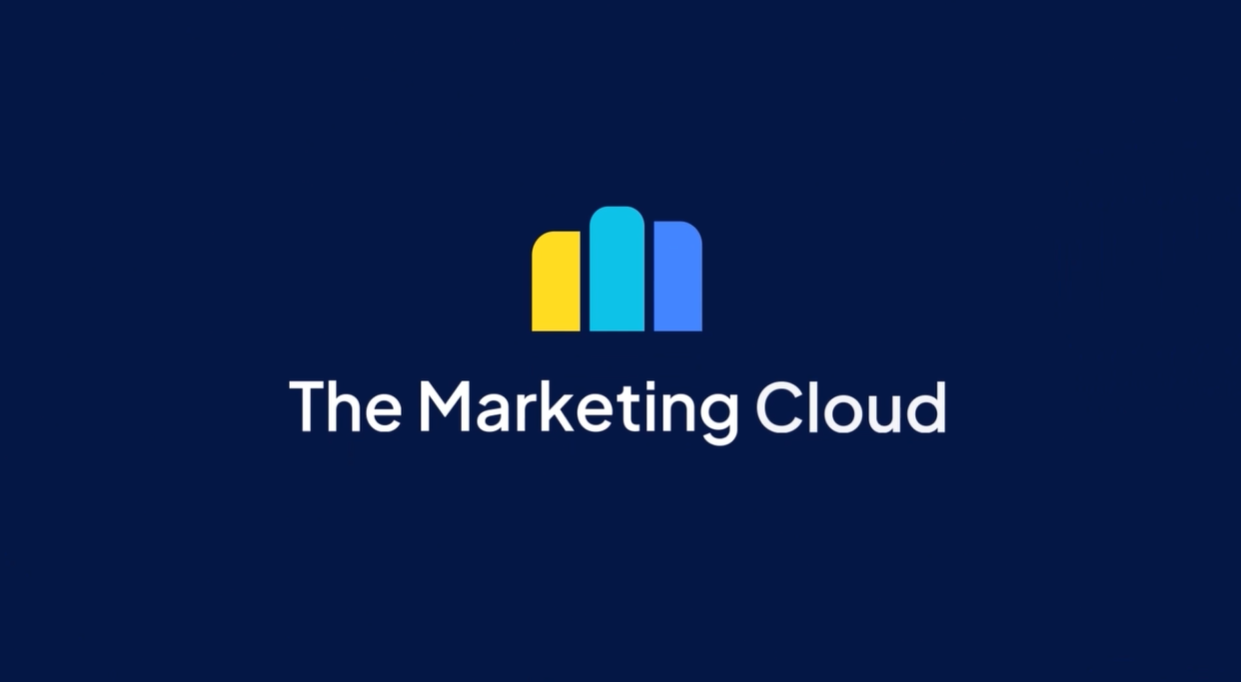
In the News, Press Releases, Thought Leadership
Jun 10, 2025
Stagwell (STGW) Chairman and CEO Mark Penn to Discuss the Irreplaceable Power of Human Creativity on the Main Stage of Cannes Lions

Newsletter
Sign Up
CONTACT
hello@stagwellglobal.com
SIGN UP FOR OUR INSIGHTS BLASTS
This piece is part of Stagwell’s Marketing Frontiers series on the Creator Economy, Influencer Marketing, and Social Commerce. To view other content in the series, visit our Creator Economy page here.
As brands explore the Metaverse, expert investment and experimentation with digitally rendered brand ambassadors to follow. When should brands leverage virtual influencers over IRL creators? How can they navigate anxieties around virtual perfectionism, unrealistic beauty standards, and representation as they play in this space? What opportunities do virtual influencers afford that real-life creators may not? We asked influencer and social experts from around Stagwell to share their POVs:
Web3: Enter the Age of Virtual Avatars
Donetta Allen, HUNTER
First, let’s answer the question of “what is a virtual influencer?” A virtual influencer is a fictional, computer-generated personality that acts, speaks, and posts on social media or appears in the Metaverse – like a human, but in a much more controlled way. The tech-savvy, faceless creators and brands behind virtual influencers decide how their avatar will act, dress, who they date, and what drama will – or won’t – appear on the timeline. The ability to work with a fictional character whose every move is controlled by a creator has an appeal for brands in a world full of opinions and photo re-shoots, even in a world where “authentic connection” is often a top reason for marketers to work with influencers.

That said, brands should begin exploring virtual influencers ASAP. Digital avatars are becoming increasingly common as brand partners, with companies like Adidas, Samsung, and Fortnite engaging virtual influencers for recent campaigns. It is expected that the prominence of marketers tapping into the virtual influencer marketplace will increase as the metaverse continues to advance.
Virtual influencers’ carefully curated images allow for greater messaging control, alignment with brand values, and less risk of controversy throughout the duration of the partnership. Like real creators, virtual influencers are diverse – from their ethnicity, gender, size, to interests – and brands should prioritize diversity as they do with real creators. While costly to develop, virtual influencers may be less expensive than traditional influencers to engage for brand campaigns. They are also reported to have 3x the engagement rate of traditional influencers, adding yet another compelling reason to consider virtual influencers for your next campaign. As more brands seek to work with these stylized, fictional characters and new opportunities emerge, we’ll start to see the diversification and expansion of the virtual influencer landscape so that it more closely reflects the human experience.
Virtual Influencers & Transmedia Brand Campaigns
Natalie Goenaga, KWT Global
Digitally-rendered influencers have made a splash on our screens since 2016 when the world was introduced to Lil Miquela. Seemingly appearing out of thin air, Lil Miquela was a thoughtfully curated personification of Instagram and Instagram culture created by a startup in Los Angeles made to “question the social norms of online platforms”- while making the mysterious company millions of dollars in sponsorships. Over the last 6 years, Lil Miquela has amassed a following of over 3 million, participated in campaigns with the likes of Bella Hadid for Calvin Klein, walked with Prada for Milan Fashion Week, modeled for Chanel, Coach, Balenciaga, and named by TIME as one of “The 25 Most Influential people on the Internet.” Did I mention she has a budding career as a pop star with over 198,000 monthly listeners on Spotify?
 As the Metaverse, CGI, and AI continue to creep onto center stage, the rise of these digital influencers is sure to follow. But in a cancel-culture world that holds a magnifying glass to transparency and authenticity from creators and brands how will these perfectly engineered creators navigate the delicate landscape and how can brands appease the masses? In the example of Lil Miquela – it is worth noting that the CGI Brazilian-American 19-year-old has serious activism chops. A vocal ally, she actively supports Black Lives Matter, the Innocence Project, LGBTQ+ Life Center, the Downtown Women’s Center, and Justice for Youth. But is that enough? The digital influencer world is certainly conforming to these changes with perfectly imperfect characters that challenge the beauty industry and their inspiring backstories and diversity to conform to the new mold. And while all creators carefully tread this sensitive landscape, with virtual influencers there is a sense of more control and brand safety and stability as their presence is meticulously and carefully crafted.
As the Metaverse, CGI, and AI continue to creep onto center stage, the rise of these digital influencers is sure to follow. But in a cancel-culture world that holds a magnifying glass to transparency and authenticity from creators and brands how will these perfectly engineered creators navigate the delicate landscape and how can brands appease the masses? In the example of Lil Miquela – it is worth noting that the CGI Brazilian-American 19-year-old has serious activism chops. A vocal ally, she actively supports Black Lives Matter, the Innocence Project, LGBTQ+ Life Center, the Downtown Women’s Center, and Justice for Youth. But is that enough? The digital influencer world is certainly conforming to these changes with perfectly imperfect characters that challenge the beauty industry and their inspiring backstories and diversity to conform to the new mold. And while all creators carefully tread this sensitive landscape, with virtual influencers there is a sense of more control and brand safety and stability as their presence is meticulously and carefully crafted.
As the most active consumers of influencer content, Millennials and Gen-Z want influencers and brands to do one thing well – and that’s to keep it real. With virtual influencers, that’s admittedly a bit harder to do. Balancing the line of when to activate real influencers and those in the digital space is a new tension brands will have to navigate but provides plenty of creative and unique opportunities. Activating virtual influencers for campaigns in an overly saturated influencer market creates thumb-stopping content for those “big splash” moments – like the recent Adidas collaboration with virtual influencer RUBY9100M who designed a custom sneaker for the brand and released her debut single alongside the launch.
Another powerful tool that can be leveraged by digital influencers? Transmedia. This newer storytelling technique can tell a single story or story experience across multiple platforms and formats using today’s current technology. Much like a traditional 360 campaign, transmedia campaigns allow digital influencers to tell your brand’s story and transition it across multiple virtual environments with ease. A virtual influencer will remain recognizable anywhere, so brands can leverage them in a TikTok video, Instagram post, or in a video game. And when it comes to costs, brands are able to activate virtual influencers for larger-than-life ideas that may not be possible with IRL creators without breaking the bank. Want to “fly” your digital creator around the world? Want to launch a campaign with them in space? Virtually anything can become possible.
Virtual or Real, the Strategy is the Same
Kelli Goss Johnson, Allison+Partners
Brands should approach virtual influencers as they would an IRL creator: for authentic brand partnerships, campaigns, awareness and messaging, while ensuring that the brand’s consumers and social audience fully understands that the virtual influencer is exactly that (and not a real human or animal). Virtual influencers can be utilized over IRL creators when the brand wants more control over the content and its many aspects, in addition to creative freedom of the content developed.

Real or not, these influencers should also be ‘on-brand’ and have the same value properties as the brand, while offering loyalty, exclusivity and brand affinity to the partnership or campaign. They are also brand safe (you won’t catch them in an unflattering paparazzi moment or posting something uncomplimentary on social media) and can be activated when, where and how a brand wants them to. And while virtual influencers have been criticized for their perfectionism, so have IRL creators, leaving the door open for virtual influencers to socially share some of their more imperfect moments and make them more relatable or ‘real.’ There is also opportunity to cross both an IRL influencer into the Metaverse with a virtual influencer, supporting the authenticity of the virtual influencer while introducing the IRL influencer into a fully digital ecosystem.
Related
Articles
Artificial Intelligence, In the News, Marketing Frontiers, Press Releases, Stagwell Marketing Cloud, Tech
Jun 12, 2025
PRophet, a Stagwell (STGW) Company, Completes Integration of UNICEPTA, Launches Unified Brand and Enhanced Media Intelligence Offering

In the News, Marketing Frontiers, Press Releases, Stagwell Marketing Cloud, Tech
Jun 11, 2025
The Marketing Cloud Launches Cutting-Edge Platform to Simplify Marketing Workflows

In the News, Press Releases, Thought Leadership
Jun 10, 2025
Stagwell (STGW) Chairman and CEO Mark Penn to Discuss the Irreplaceable Power of Human Creativity on the Main Stage of Cannes Lions

Newsletter
Sign Up
By
Jay Powell
SVP, Communications,
MMI Agency
CONTACT
hello@stagwellglobal.com
SIGN UP FOR OUR INSIGHTS BLASTS
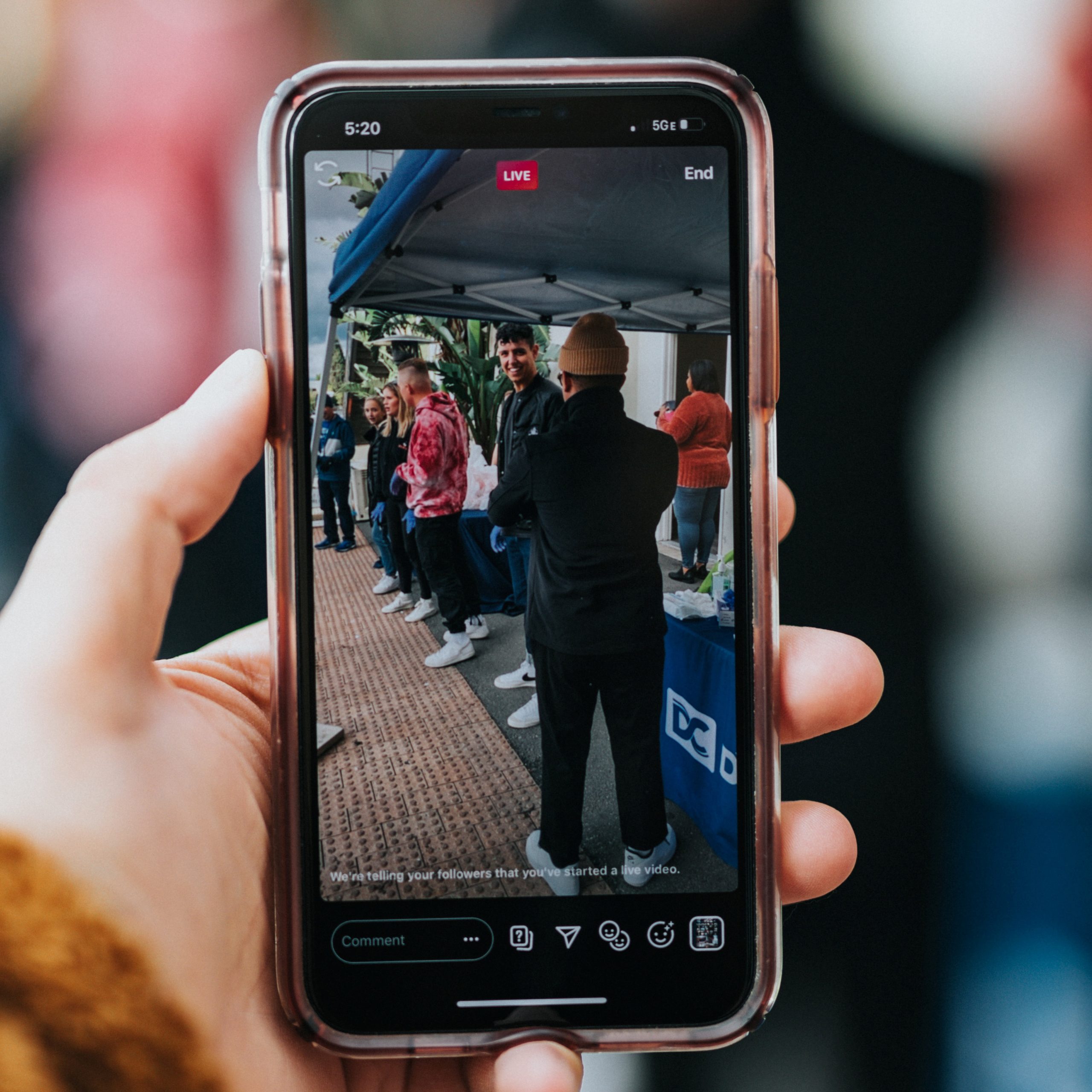
At the height of the COVID-19 pandemic, stay-at-home orders and social distancing drove hordes of Americans to their devices to connect with family and friends. It also helped fuel more online purchases that might typically have been made in-store. Cue the rise of shoppertainment – a phenomenon at the intersection of online shopping and influencer livestreaming that brands are eager to leverage, emboldened by the success live-streamers have found across Asia-Pacific.
As an integrated communications and media firm that has remained at the forefront of marketing innovation since inception, MMI is uniquely qualified to support brands through this latest evolution of commerce. After digging into performance data, examining industry reports, and speaking with brands and influencers, we have compiled a quick start guide to help your brand execute a winning influencer livestream campaign.
Shoppertainment in the digital age is the latest way brands utilize influencers to make the social shopping experience more entertaining and authentic. Shoppertainment rests on influencer livestreaming, which is often less polished than the slickly-produced shorts created by brands and influencers for official campaigns. For leaders worried about brand safety and consistency across platforms, this imperfect content might be troubling. But Caroline Vazzana (@cvazzana), style influencer, says the imperfection of livestreaming is its charm. “The beauty of going live is that not everything needs to be (or can be) perfect!”
At MMI, we love helping brands connect with their target audiences in new ways and across new platforms. If you’re planning to tap into growing trends that can positively impact your bottom line, like livestreaming, our influencer marketing team has the experience to support you..
Livestreams Sell Out the Digital Shelf in China
In 2020, the shoppertainment took off in China; two-thirds of Chinese consumers purchased products via livestreams that year. During Taobao’s 2021 Single’s Day, China’s unofficial shopping holiday that is four times larger than Black Friday in the U.S., China’s two most famous livestreaming stars sold a total of $3 billion worth of products via separate livestreaming sessions. The verticals driving this success in China are cosmetics, beauty products, fashion, and food.
Influencer livestreaming is gaining traction, as evidenced by increasing viewership and conversion rates. Per Bloomberg, social commerce is expected to accelerate over the next few years, with U.S. sales reaching $1.2 trillion by 2025.
Instagram and TikTok Take Center Stage
Initially a photography-focused app, Instagram now prioritizes video content to keep up with its competitors, most recently with the introduction of Instagram Live Shopping. MMI facilitated a collaboration between a large skin care brand and beauty and lifestyle influencers Paola Matute (@paox33) and Melody Acevedo (@melodyslife) to promote holiday season self-care products via Instagram Live. 44% of Instagram users shop Lives weekly, making them an effective way to place your product directly in front of consumers.
Brands are also finding success on “the QVC for Gen Z,” TikTok Live, whose “Top LIVEs” category makes it easy for live content to be discovered by users on the platform. MMI executed a TikTok Live on behalf of a major hair care brand, hosted by Vazzana, to promote an innovative new hair styling product line. Viewers chatted with Caroline during the session and posed questions that she answered live, creating an interactive environment for viewers. Click-through rate to the brand’s product page exceeded campaign expectations.
Influencers can seamlessly livestream beyond social channels via a brand’s website by incorporating livestream shopping platforms like buywith and talkshoplive. This allows the audience to shop directly on the e-commerce site, along with the influencer, in real time, removing path-to-purchase friction, increasing engagement and boosting conversions. Large brands and publishers who are already livestreaming shoppable content across these platforms include Walmart, Buzzfeed and Hearst.
Best Practices for Lively Livestreaming
The world of influencer livestreaming can be daunting to brands that are accustomed to controlling every aspect of influencer content development. MMI’s philosophy for content creation is to give influencers “freedom within a framework” to do what they do best and create content they know their followers will engage. MMI compiled this list of tips to consider as you craft your influencer livestreaming strategy.
Go with the platform where your audience spends the most time..
Meet your audience where it’s already engaged to maximize the reach and life cycle of your content.
Go with someone your audience trusts.
87% of Instagram users say influencers have inspired them to make a purchase. Collaborate with an influencer your audience already looks to for advice to drive conversions.
Go with someone you trust.
Identify creators you’ve worked with in the past who will understand the nuances of your brand as well as the required FTC and platform-specific disclosure policies.
Go with the content format your audience engages with most.
Examine past organic social and influencer campaign performance to determine the content type(s) with which your audience is more likely to interact.
Go with the platform where your audience spends the most time..
Meet your audience where it’s already engaged to maximize the reach and life cycle of your content.
Livestreaming, shoppertainment, and social commerce are new domains for today’s brands. To drive results, they will need to get comfortable with leaning on influencers and ceding creative control where necessary. We’ve found, though, that the best collaborations occur when influencers are given the freedom to create what works for their audiences. Acevedo affirms that the resulting livestream “feels authentic, yet informative for the audience.” When you’re ready to see influencer livestreaming work magic for your brand, MMI’s influencer marketing team is here to support you every step of the way.
See how MMI helps brands break through the noise and stand out here.
MMI Agency is a modern brand lab where performance meets possibility. Our mission is to inspire action by combining our end-to-end approach to reaching consumers with our tenacity for data.
Related
Articles
Artificial Intelligence, In the News, Marketing Frontiers, Press Releases, Stagwell Marketing Cloud, Tech
Jun 12, 2025
PRophet, a Stagwell (STGW) Company, Completes Integration of UNICEPTA, Launches Unified Brand and Enhanced Media Intelligence Offering

In the News, Marketing Frontiers, Press Releases, Stagwell Marketing Cloud, Tech
Jun 11, 2025
The Marketing Cloud Launches Cutting-Edge Platform to Simplify Marketing Workflows

In the News, Press Releases, Thought Leadership
Jun 10, 2025
Stagwell (STGW) Chairman and CEO Mark Penn to Discuss the Irreplaceable Power of Human Creativity on the Main Stage of Cannes Lions

Newsletter
Sign Up
By
Kaitlyn Schembri
Contributor, Koalifyed
CONTACT
hello@stagwellglobal.com
SIGN UP FOR OUR INSIGHTS BLASTS
With the advent of social commerce, influencers have never been more important. Global sales driven by social commerce will triple to $1.2 trillion by 2025. At the same time, user-generated content is on the rise, accounting for 39% of weekly media hours consumed by Americans. We’re living in the age of nano-influence, driven by the professionalization of the Creator Economy and brand investments in social commerce.
In the old days of influencer marketing, celebrity partnerships were strong drivers of top-of-funnel marketing. A-listers like Betty White gave brands wide-ranging exposure. No wonder brands lead with celebrities at the Super Bowl; on a stage with a hefty price tag, leveraging talent with a built-in fan base makes sense. Salesforce’s recent Big Game ad with Matthew McConaughey was a memorable callback to his 2014 hit “Interstellar.” It likely did little to drive conversion when it aired but drove conversation for days afterward.
With the rise of social commerce and performance measurement, creators boast an enviable position in today’s brand marketing playbook. In-app social marketplaces that let consumers shop the entire funnel on Instagram and TikTok mean the power of a single influencer post holds more weight than ever before. Consumers no longer need to see your website to make a sale – and it’s likely they don’t want to!
Nano-influencers are today’s driver of commerce. TikTok, more than any other platform, is driving this trend. Over the past two years, TikTok has democratized the digital world, allowing creators to reach a large audience on the app without a substantial following (and, in some cases, hardly any following at all). The algorithm prizes discovery over drudgery, priming niche content and creators with fewer than 10K followers to capture eyeballs (and results).
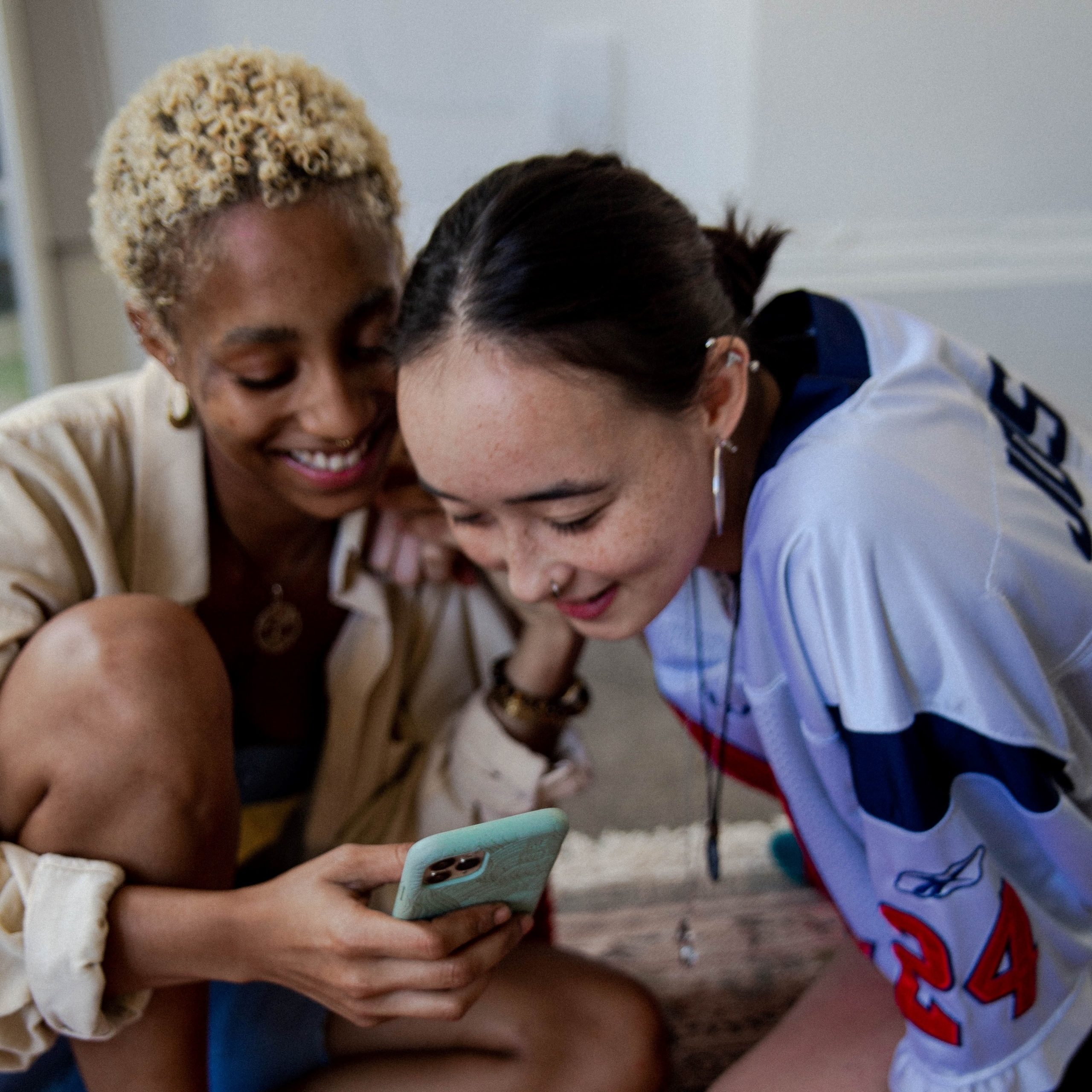
In this landscape, nano influencers are an authentic way for brands to connect with consumers. Frequently the tastemakers and thought leaders of their niche communities, they command the respect of small but mighty followings. Consumers are more likely to view them as friends than other-worldly celebrities, adding trust and engagement. Studies have shown that while 3% of consumers would consider buying a product in-store if promoted by a celebrity, that number jumps to 60% for a nano-influencer.
Dunkin’ recently tapped into various influencers with fewer than 50,000 followers to power its latest “coffee-first” campaign. Analysis showed nano-influencers generated higher engagement rates, with an average engagement rate of 5.2%. Dunkin’ succeeded in organically growing a support base for its coffee ambitions.
Nano influencers also can help brands drive a positive impact on diversity & inclusion. Being purposeful in curating your influencer marketing partnerships can ensure your brand does its part in platforming diverse perspectives. Consider how nano-influencers from yet-unengaged segments might supplement your core marketing activities for major product launches. Launching a new foldable exercise bike for the WFH generation? Consider partnering with TikTok influencers who produce content on career acceleration for P.O.C. talent. You never know what content may come of the effort!
As nano influencers proliferate marketing campaigns, it’s critical brands have agile, scalable solutions for influencer marketing management. Creators should be natural extensions of the marketing team. Investing in the right tech to reach, negotiate, and communicate with them is essential for success in this era of super-charged social commerce.
When leveraging the power of nano influencers, do not overlook the vetting process. Brand safety controls are key in the wild west of today’s platform-fragmented internet, as is closely managing influencer spending. Many marketers fall prey to the hidden costs of fake follower bots on their influencer efforts, which threaten to diminish a campaign’s chances of success and harm trusted influencer relationships. Bot detection is vital to ensuring brands are getting the complete picture. At Koalifyed, we leverage our platform’s built-in S.N.I.F.F. technology to help brands reach a higher R.O.I. for their influencer marketing investments.
We hear success stories every day from brands utilizing nano-influencers to hit their marketing KPIs. We predict the gap between the brands who invest in this strategy versus those who don’t will only widen in the coming years as platforms double-down on social commerce development and authentic brand marketing remains a priority for consumers.
Related
Articles
Artificial Intelligence, In the News, Marketing Frontiers, Press Releases, Stagwell Marketing Cloud, Tech
Jun 12, 2025
PRophet, a Stagwell (STGW) Company, Completes Integration of UNICEPTA, Launches Unified Brand and Enhanced Media Intelligence Offering

In the News, Marketing Frontiers, Press Releases, Stagwell Marketing Cloud, Tech
Jun 11, 2025
The Marketing Cloud Launches Cutting-Edge Platform to Simplify Marketing Workflows

In the News, Press Releases, Thought Leadership
Jun 10, 2025
Stagwell (STGW) Chairman and CEO Mark Penn to Discuss the Irreplaceable Power of Human Creativity on the Main Stage of Cannes Lions

Newsletter
Sign Up
BY
Christine McDermott
VP, Veritas/Meat & Produce
CONTACT
hello@stagwellglobal.com
SIGN UP FOR OUR INSIGHTS BLASTS
This piece is part of series on Social Commerce, Influencer Marketing, and the Creator Economy.
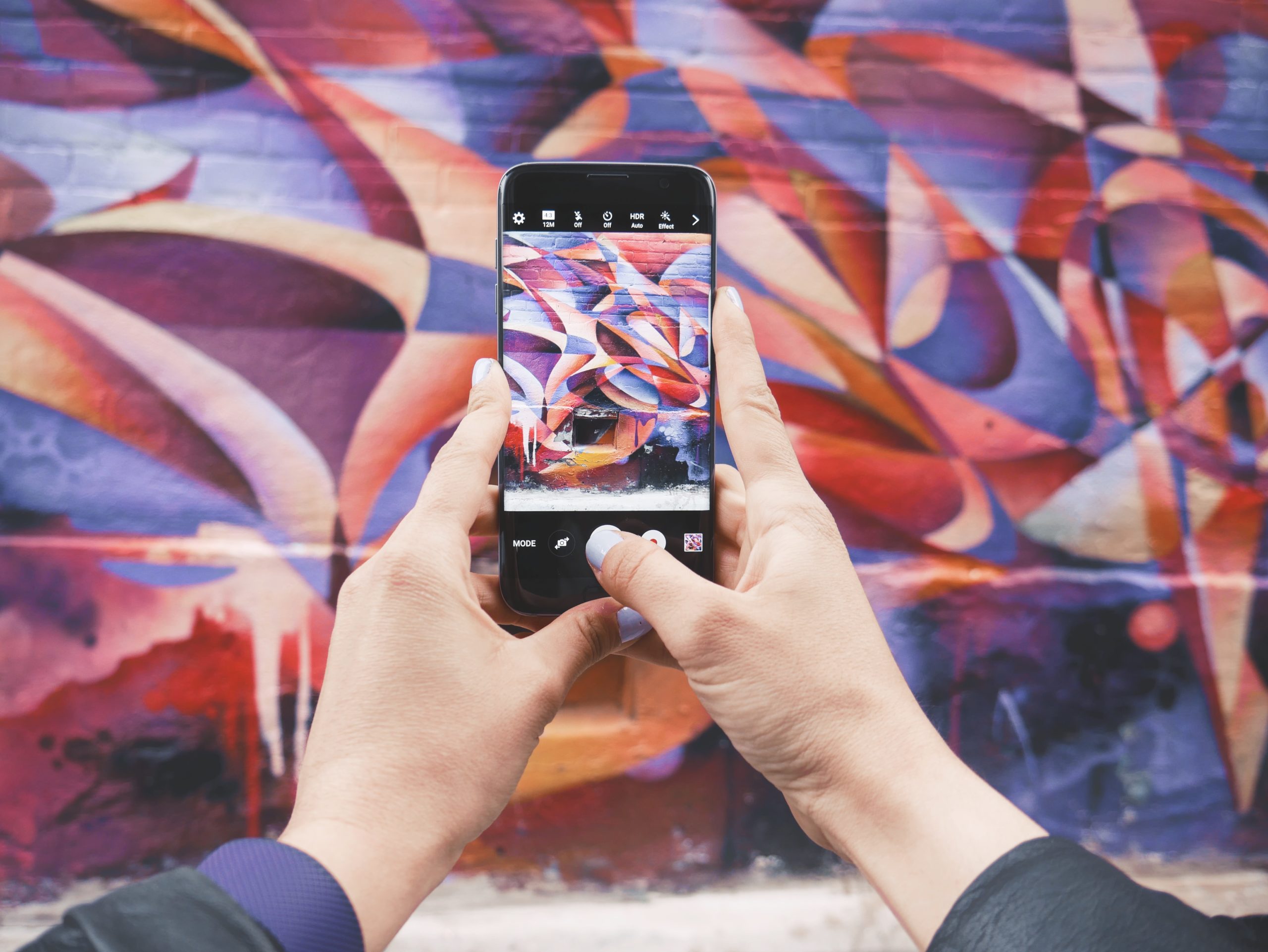
A decade ago, brands looked to influencer agencies to connect with the ‘who’s who’; today, they come to us to wield the transformative power of social influence through their entire marketing stack. As part of the agency that felt so strongly about the term “influencing the influencers” that we trademarked it, I am keenly aware that influencer marketing long predates the current hype that social media has generated around the industry. When we look at the prioritization of influencer marketing in today’s marketing mix, it’s no longer considered a nice to have but rather a core component of brand planning.
It wasn’t always this way, though. This has provided a fascinating opportunity to watch the shift in the marketplace from a client service perspective. In today’s creator-centric economy, brands require influencer marketing agency partners to keep apace the transformation in this space.
From Impressions to Engagement
In the days of blogs and burgeoning social media channels, the most significant opportunity influencers afforded was the chance to reach new audiences. The focus was almost exclusively on maximizing the number of impressions from influencer content. Guaranteed organic reach and high blog readership provided cost-effective ways for brands to reach audiences that otherwise may never have interacted with them. The deep relationships that influencer marketing agencies held with influencers were critical to obtaining the best earned and paid opportunities for our brand partners and allowed for agility in influencer placements.
As social channels moved into the spotlight, accounting for more media hours consumed across generations, the focus shifted to engagement. The goal was to measure the attention content could generate through authentic connection with audiences in an increasingly competitive digital world. With this, we saw the rise of micro and nano influencers who built strong relationships through two-way communication with their audiences, maintaining consistently high engagement. Trusted recommendations from the right influencers could bring your brand into the consideration set for your target audience. Dedicated audiences of nano influencers also provided an opportunity to access niche consumer segments that otherwise would be challenging for brands to find. Our key to success was pairing the right influencers with our brands, ensuring alignment on values and demographics.
The Creator Economy
Today, getting the right message to the right person at the right time has never been more critical – or more difficult as the consumer ecosystem becomes increasingly sophisticated. New channels and content formats provide evermore opportunities to attract and engage new and existing audiences with relevant content. Moving influencer marketing from a single tactic to a full-funnel approach creates a new world of opportunity for brands, while at the same time raising countless new considerations. With all these factors to contend with, the role influencer marketing agencies take on has never been more critical. Today’s influencer marketing agency partners must help clients navigate this ever-changing world by:
- Going beyond the numbers: As data-driven marketers, it can be attractive to make decisions based solely on the immense data we now have at our fingertips. While these are fundamental parts of our discovery and vetting processes, we believe it’s equally important to review the qualitative elements of an influencer agreement: alignment with brand values, the types of social conversations creators drive among their followings, and, importantly, any content or connections that may increase brand risk.
- Capitalizing on available technology: Today’s digital tools provide capabilities that aid every step of the process: diving deep into audience demographics, reviewing years of content to ensure brand safety, authenticating audiences to remove bot traffic, and analyzing results. The available options can also be overwhelming. Here, the right mix of talent (agency experts with a deep understanding of the landscape) with technology (digital SaaS and DaaS tools) can supercharge campaign results.
- Keeping human connection at the center: True influence is built on strong connections between agencies and influencers and influencers and their audiences. Authentic connection is essential, from the relationships we build to the content we create.
- Letting creators be creative: Our influencers are partners in the creative process, not simply another outlet or a channel to distribute brand messages. Influencers know their audiences better than anyone. Leaning into their insights and creativity will lead to more authentic content and experiences that resonate. True partnerships with influencers allow for co-creation and collaborations that can excite and convert.
- Researching and reviewing: Due to the steady growth of influencer marketing, we now have a wealth of research to help inform and guide everything from partnership models to accurate approaches for optimizing reach. Every campaign is an opportunity to test, learn, and then review performance to better optimize results in the future.
There has been a tremendous acceleration in influencer marketing growth and investment. When done well, it works. When we examine the transformation of influencer marketing and the creator economy in just a few short years, it becomes clear that more evolution is to come. Leaning on agency partners with deep knowledge of the discipline, facility with the technology tools driving efficiency through the space, and authentic relationships with influencers will help brands get the most out of this fast-moving space.
Related
Articles
Artificial Intelligence, In the News, Marketing Frontiers, Press Releases, Stagwell Marketing Cloud, Tech
Jun 12, 2025
PRophet, a Stagwell (STGW) Company, Completes Integration of UNICEPTA, Launches Unified Brand and Enhanced Media Intelligence Offering

In the News, Marketing Frontiers, Press Releases, Stagwell Marketing Cloud, Tech
Jun 11, 2025
The Marketing Cloud Launches Cutting-Edge Platform to Simplify Marketing Workflows

In the News, Press Releases, Thought Leadership
Jun 10, 2025
Stagwell (STGW) Chairman and CEO Mark Penn to Discuss the Irreplaceable Power of Human Creativity on the Main Stage of Cannes Lions

Newsletter
Sign Up
By
Amber Roussel (Senior Director, Communications) and Toni Smith (Director of Social Marketing), MMI Agency
CONTACT
hello@stagwellglobal.com
SIGN UP FOR OUR INSIGHTS BLASTS
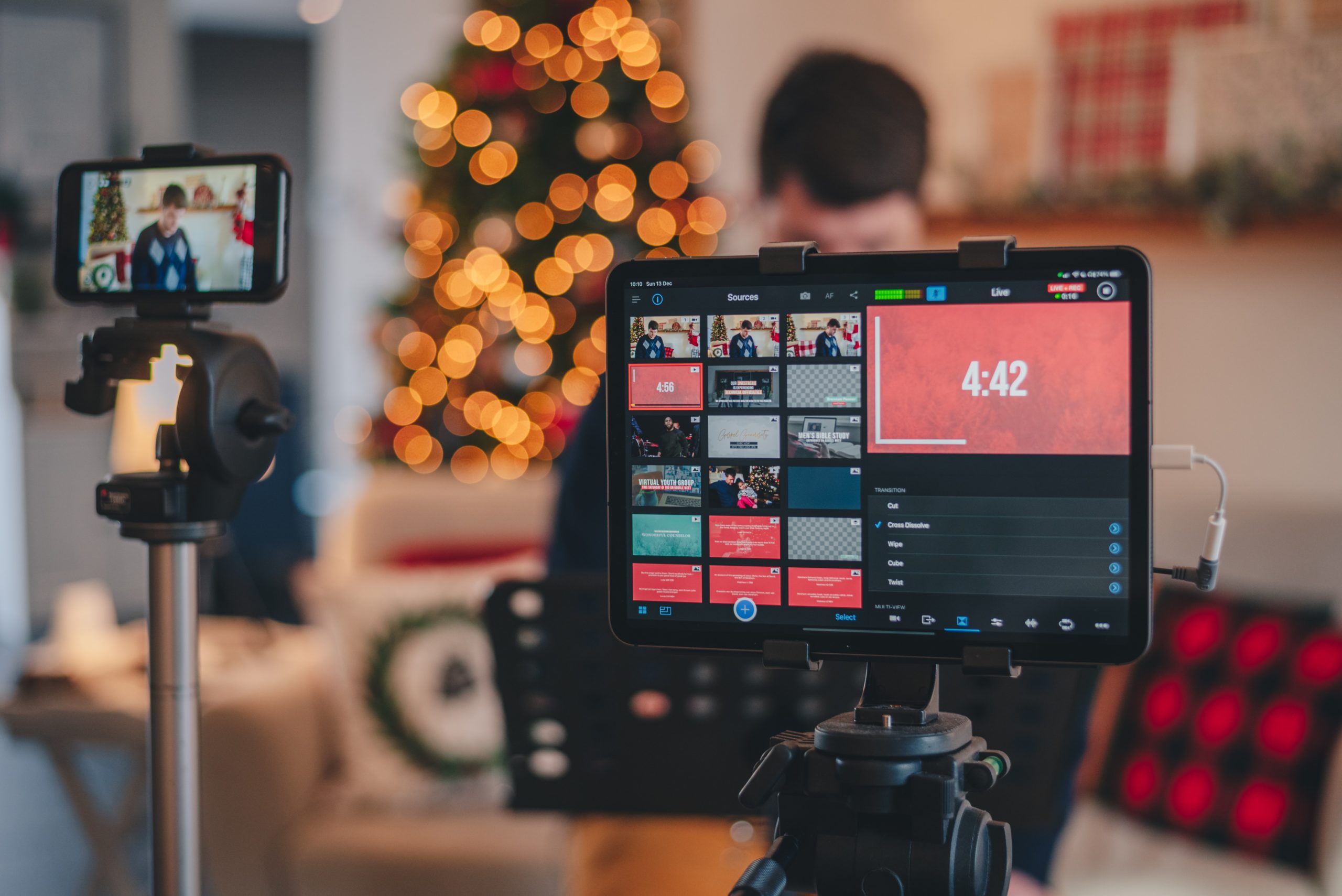
Today’s path to purchase inhabits a space foreshadowed in movies like Back to the Future, The Fifth Element, and Minority Report. We’ve moved from brick-and-mortar stores to the metaverse and from cash to credit to crypto, and the social commerce those classics previewed is now a crucial part of our modern marketing lexicon. The question now is no longer if social can become a driver of business but which platforms are leading the pack – and how to maximize value across the ecosystem. TikTok or Instagram? Brand-created environments or Pinterest? For 36 years, we’ve been helping brands navigate new worlds to better connect with their audiences and drive their businesses. Here’s a guide to getting in – and staying on top – of the social commerce game.
Selling Starts with Strategy
Here’s a powerful stat: 98% of consumers plan to purchase through social or influencer shopping at least once in 2022, per Sprout Social. That’s up tremendously from the 68% of consumers who reported doing so in 2021. This trend follows investments from Instagram, Facebook, TikTok, Snapchat, and Pinterest into dedicated shopping tabs that allow brands to “set up shop” in-platform and highlight their product catalogs. Soon, we could see these in-app shopping areas enable complete end-to-end purchasing.
To prepare for this new way of shopping, we suggest that brands:
- Identify the audience(s) they want to reach on social media
- Set clear goals and timelines
- Develop a social selling plan that includes paid media, organic social, and influencer marketing
- Implement a strong channel and content marketing strategy
- Leverage in-app shopping tools or a third-party e-commerce platform to facilitate social sales
Our advice to brands is always to be clear in your goals at the outset and embrace a test-and-learn mentality. Social commerce can be as dynamic as social media conversation. You need to embrace it and be ready to learn, pivot, and optimize in real-time. Those who are open to ‘experimentation’ will realize efficiency and success.
MMI clients, including ALOHA and Plant Apothecary, utilize social commerce to create end-to-end shopping experiences for their customers by pairing Instagram Shops with link-out to their websites. ALOHA also employs in-app shoppable links and social media influencers. In a recent ALOHA influencer campaign featuring two mid- and seven micro-tier influencers, sponsored social content received over half a million impressions and generated an overall engagement rate of 3.75%. Four of the nine influencers posted content on Instagram that achieved an engagement rate above 11%, indicating high interest in the brand and its products.
Where Is the Heat? Industries and Categories Seeing Success
Consumer electronics, fashion, and home items are trending in social shopping, with beauty and personal care products not far behind. Influencer partnerships play a significant part in this trend. If the higher-than-average engagement rates on posts containing #ad are any indicator, all influencer content – whether sponsored or not – works.
For Kate Spade, a limited-edition heart-shaped purse became an overnight bestseller when an influencer gushed about it on TikTok. Her post led to a host of user-generated content (UGC) when others posted videos of themselves buying and wearing the purse. The positive response encouraged Kate Spade to offer a version of the bag year-round. MMI also recently integrated a live shopping experience paired with custom influencer content to drive Dell laptop sales on Amazon.com. Gen Z and millennial influencers engaged shoppers in real-time via the Amazon Live Creator Stream. Total sales from promo code redemptions exceeded six figures from a single event.
Smart Brands Leverage Paid Amplification to Bolster Results
Although success is possible with organic social strategies, it can be challenging to break through without a robust paid media component. We believe a full-funnel paid media strategy is crucial for amplifying the overall impact of social selling, and can often lift campaign performance by 2-4 times on average. For one MMI client, clicks increased by 80% when we began testing sponsored creative from an influencer handle versus the brand handle. In a world ruled by algorithms, media campaigns arm brands with the ability to target audiences that may not organically encounter its content or products. We’ve found that Facebook and Instagram are still winning for lower-funnel conversions, and TikTok and YouTube generally outperform in terms of top-of-funnel awareness efforts.
Future Forward
Social commerce spend will reach $1.2 trillion by 2025: undoubtedly, the social media shopping cart is here to stay. How we help clients cash in on this gold rush with innovative social selling strategies will never be a one-size-fits-all approach. Aligning top-notch creative assets with influencer marketing + earned media outreach is a formula for success in today’s marketplace – and a scalable toolkit for embarking on this new frontier of social commerce.
Our DMs are open if you’re looking for partners to help make sense of it all. See you in the meta mall.
Learn more about how MMI can help you dominate the digital shelf here.
MMI Agency is a modern brand lab where performance meets possibility. Our mission is to inspire action by combining our end-to-end approach to reaching consumers with our tenacity for data.
Related
Articles
Artificial Intelligence, In the News, Marketing Frontiers, Press Releases, Stagwell Marketing Cloud, Tech
Jun 12, 2025
PRophet, a Stagwell (STGW) Company, Completes Integration of UNICEPTA, Launches Unified Brand and Enhanced Media Intelligence Offering

In the News, Marketing Frontiers, Press Releases, Stagwell Marketing Cloud, Tech
Jun 11, 2025
The Marketing Cloud Launches Cutting-Edge Platform to Simplify Marketing Workflows

In the News, Press Releases, Thought Leadership
Jun 10, 2025
Stagwell (STGW) Chairman and CEO Mark Penn to Discuss the Irreplaceable Power of Human Creativity on the Main Stage of Cannes Lions

